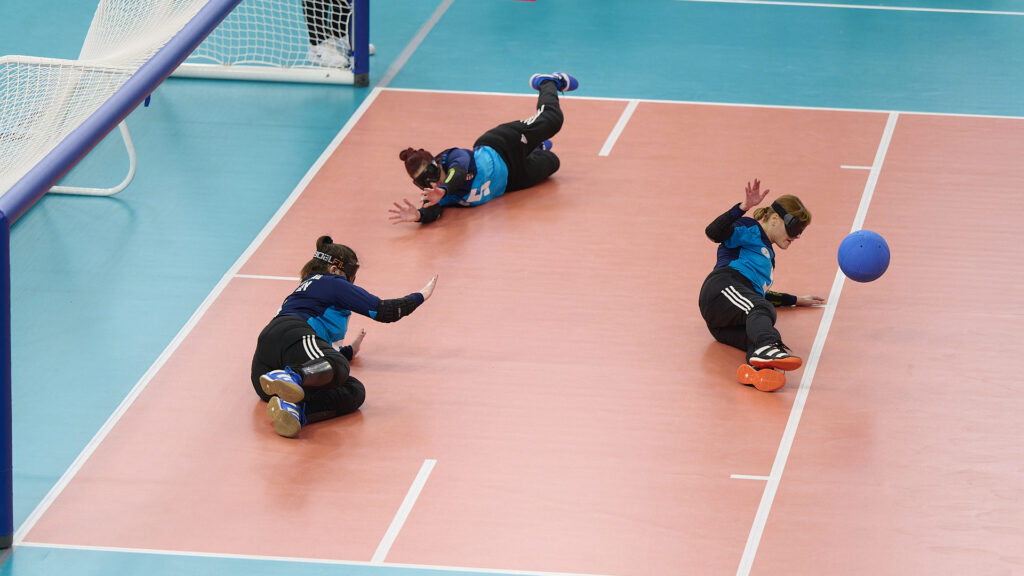News
IBSA Goalball ratio formula explained
Date: February 27, 2013
Category: Goalball
Many of you have been asking recently about the ratio formula that is used to fill remaining spots at major tournaments such as the IBSA Goalball World Championships.
It can be a difficult process to understand but if it is explained clearly then you should be able to grasp it.
Through this article, we hope that the process is explained in a way that you are able to understand the formula.
To begin, the official rule is as follows:
“49.4Ratio Formula
Each place available will be filled by a team from the IBSA Goalball Region with the highest score using the following principle:
The total number of teams in the Regional Championships of the previous two years divided by the number of teams from that region already qualified for the World Championships.”
The purpose of this rule is to fill remaining spots at the World Championships in proportion to how many teams have already qualified from each IBSA Goalball region and taking into consideration how many teams participate in those regions regional championships. This is the reason why majority of the ratio formula spots in the past have been filled by European nations, due to the large amount of competing nations compared to the other regions.
So, to calculate the ratio formula, we first need to determine 3 sets of numbers; how many regions are there, how many teams have participated at the regional championships and how many teams have already qualified for the tournament from each region.
IBSA Goalball has currently four regions that are responsible for organizing their regional championships. It is also these four regions that receive an equal number of qualifying spots at major tournaments such as the World Championships.
The four regions are as follows:
- America’s – includes: North, Central and Southern America as well as the Caribbean islands.
- Europe – including Israel
- Africa – logically, the whole African continent
- Asia/Pacific – this includes all nations that were formerly viewed as “Oceania”.
The next number that has to be worked out is the total number of different nations competing in each of the regional championships over the past two years. Due to the following World Championships being held in 2014, we need to look at the championships held in 2012 and 2013. Clearly no region has held their regional championships as of yet, therefore, any numbers used in this article will be purely fictitious.
The reason why we look at the past two years is to make sure that the European B Championships are also included. While we are on the topic of Europe, Europe is a unique continent because championships are held yearly due to the promotion/relegation system in place. Each nation is only counted once. Therefore, to use the men as an example: 10 nations from A division plus 4 from B division plus the total number of competing nations in the C division.
It is also important to note that the final number of participating teams at each particular regional championship cannot be calculated until after the championships have begun. The reason for this is that some teams may register to compete but not actually show up at the tournament. In this case, these teams are not counted.
For the purpose of demonstrating the ratio formula, here are some vague numbers that can be viewed as participating number of nations in each region during 2012 and 2013.
- Americas – 8
- Europe – 27
- Africa – 6
- Asia/Pacific – 11
For this example, there is only one set of numbers but please remember that the rule is used in the exact same manner for both the mens and women’s competitions.
The final number that is important is the number of already qualified teams per region. For this example, we’ll continue with what could be viewed as the mens division for the upcoming World Championships.
- America’s – 3 (Brazil as Paralympic silver medalists plus the regional champions and one other spot)
- Europe – 4 (Finland and Turkey as current Paralympic gold and bronze medalists respectively plus regional champions and one other spot)
- Africa – regional champions plus one other spot
- Asia/Pacific – regional champions plus one other spot.
To see a full detailed list of already qualified nations and how the rest of the spots are allocated, please go to our previous article at http://www.ibsa-sports.org/news/196/ibsa-goalball-wc-a-currently-qualified-nations
So, now we have all our important numbers, we can start the ratio formula.
As stated above, the formula is the total number of participating teams divided by the number of already qualified teams. The first ratio formula spot then goes to the region with the highest result.
Using our vague numbers, we’ll now calculate:
- Americas – 8 participating teams divided by 3 already qualified nations = 2.67
- Europe – 27 participating nations divided by 4 already qualified nations = 6.75
- Africa – 6 participating nations divided by 2 already qualified nations = 3
- Asia/Pacific – 11 participating nations divided by 2 already qualified nations = 5.5
Europe has the highest score and therefore receives the first “ratio formula” spot.
Now we conduct the formula again but this time Europe has one extra “already qualified nation”.
- Americas – 8 participating teams divided by 3 already qualified nations = 2.67
- Europe – 27 participating nations divided by now 5 already qualified nations = 5.4
- Africa – 6 participating nations divided by 2 already qualified nations = 3
- Asia/Pacific – 11 participating nations divided by 2 already qualified nations = 5.5
This means that the second ratio formula spot will be offered to Asia/Pacific.
This formula is continually performed until all “ratio formula” spots have been filled.
When a region is offered a “ratio formula” spot, it is usually given to the highest ranking team in that region who has not already qualified for the particular tournament.
We at IBSA Goalball hope that this article has answered all your questions in regards to this formula and it is now clear to all.





